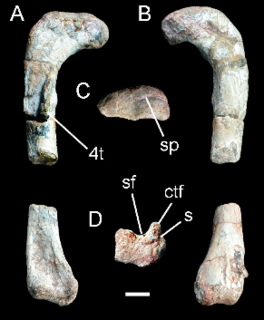 W
WAlwalkeria is a genus of basal saurischian dinosaur from the Late Triassic, living in India. It was a small bipedal omnivore.
 W
WArchaeodontosaurus is a genus of sauropod dinosaur from the Middle Jurassic. Its fossils were found in the Isalo III Formation of Madagascar. The type species, Archaeodontosaurus descouensi, was described in September 2005. The specific name honours the collector, Didier Descouens. It is a probable sauropod, with prosauropod-like teeth.
 W
WBarapasaurus is a genus of basal sauropod dinosaur from Early Jurassic rocks of India. The only species is B. tagorei. Barapasaurus comes from the lower part of the Kota Formation, that dates back to the Sinemurian and Pliensbachian stages of the early Jurassic. It is therefore one of the earliest known sauropods. Barapasaurus is known from approximately 300 bones from at least six individuals, so that the skeleton is almost completely known except for the anterior cervical vertebrae and the skull. This makes Barapasaurus one of the most completely known sauropods from the early Jurassic.
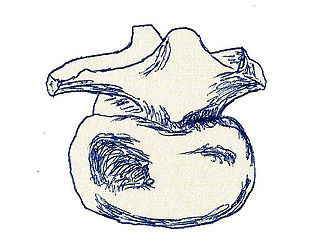 W
WCoeluroides is a small, little-known theropod dinosaur that lived during the Late Cretaceous Period in what is now India. It is known from scattered tail vertebrae discovered in the Lameta Formation. It is estimated at two meters long and perhaps thirty kilograms in weight, similar to but larger than Jubbulpuria. Coeluroides was long considered a nomen dubium because of sparse remains, but a 2004 overview of Indian theropods from the Lameta Formation found it to be probably valid. An SVP 2012 abstract considers it as a possible senior synonym of Ornithomimoides.
 W
WCompsosuchus is an extinct genus of noasaurid dinosaur originally classed as an abelisaurian. It lived during the Late Cretaceous in India.
 W
WDahalokely is an extinct genus of carnivorous abelisauroid theropod dinosaur from the Late Cretaceous (Turonian) of Madagascar.
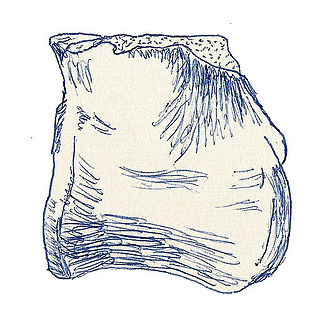 W
WDryptosauroides is the name given to a dubious genus of dinosaur from the Late Cretaceous. It was a large theropod, belonging to the Abelisauridae. It was 10 meters long and 1.5 tonnes in weight.
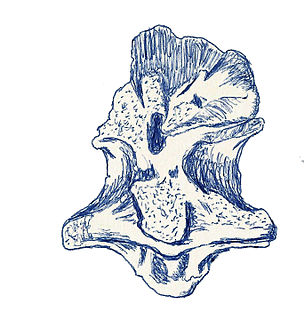 W
WIndosaurus is a genus of theropod dinosaur once living in what is now India. It lived about 69 to 66 million years ago, in the Maastrichtian division of the Late Cretaceous. It weighed roughly 700 kg (1540 lb).
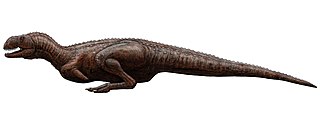 W
WIndosuchus is a genus of abelisaurid dinosaur from the Late Cretaceous Period, a theropod related to Abelisaurus. Like most theropods, Indosuchus was a bipedal carnivore. It was about 7 metres long, weighed about 1.2 tonnes, and had a crested skull, flattened on the top. Other authors estimated it to be 9.7 meters in length and 2.3 tonnes in weight.
 W
WIsisaurus is a genus of titanosaur sauropod dinosaur from the Late Cretaceous Period from what is now India.
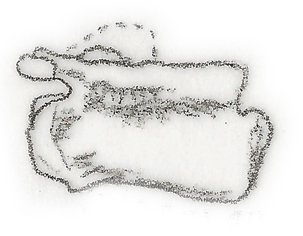 W
WJubbulpuria is the name given to a dubious genus of small dinosaur from the Late Cretaceous of India.
 W
WKotasaurus is a genus of sauropod dinosaur from the Early Jurassic period (Sinemurian–Pliensbachian). The only known species is Kotasaurus yamanpalliensis. It was discovered in the Kota Formation of Telangana, India and shared its habitat with the related Barapasaurus. So far the remains of at least 12 individuals are known. The greater part of the skeleton is known, but the skull is missing, with the exception of two teeth. Like all sauropods, it was a large, quadrupedal herbivore with long neck and tail.
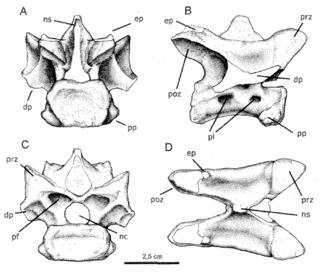 W
WLaevisuchus is a genus of abelisauroid theropod dinosaur from the Late Cretaceous. Its remains were discovered by Charles Alfred Matley near Jabalpur in Maastrichtian deposits in the Lameta Formation in India, and were named and described by paleontologists Friedrich von Huene and Matley in 1933. The type species is Laevisuchus indicus. The generic name is derived from Latin laevis, "light" and the Greek name for the Egyptian crocodile god, Soukhos. The specific name means "Indian" in Latin. It is known only from three cervical vertebrae and a dorsal vertebra. A holotype was not assigned by Huene and Matley and a lectotype has never been chosen from the syntypes. All remains except GSI K27/696 were lost; GSI K20/613 was rediscovered in 2012.
 W
WLamplughsaura is a genus of saurischian dinosaur from the Sinemurian-age Dharmaram Formation of India, dating from between 196 and 190 million years ago. The type and only species is Lamplughsaura dharmaramensis. It is known from several partial skeletons of a large quadrupedal animal up to 10 meters (33 ft) long, and was either a basal sauropod or, less likely, a more basal sauropodomorph.
 W
WLapparentosaurus is a genus of sauropod dinosaur from the Middle Jurassic. Its fossils were found in Madagascar. The type species is L. madagascariensis.
 W
WMajungasaurus is a genus of abelisaurid theropod dinosaur that lived in Madagascar from 70 to 66 million years ago, at the end of the Cretaceous Period, making it one of the last known non-avian dinosaurs that went extinct during the Cretaceous–Paleogene extinction event. The genus contains a single species, Majungasaurus crenatissimus. This dinosaur was briefly called Majungatholus, a name which is now considered a junior synonym of Majungasaurus.
 W
WMasiakasaurus is a genus of small predatory theropod dinosaurs from the Late Cretaceous of Madagascar. In Malagasy, masiaka means "vicious"; thus, the genus name means "vicious lizard". The type species, Masiakasaurus knopfleri, was named after the musician Mark Knopfler, whose music inspired the expedition crew. It was named in 2001 by Scott D. Sampson, Matthew Carrano, and Catherine A. Forster. Unlike most theropods, the front teeth of M. knopfleri projected forward instead of straight down. This unique dentition suggests that they had a specialized diet, perhaps including fish and other small prey. Other bones of the skeleton indicate that Masiakasaurus were bipedal, with much shorter forelimbs than hindlimbs. M. knopfleri reached an estimated adult body length of around 2 metres.
 W
WNarindasaurus is a genus of turiasaurian sauropod dinosaur from the Middle Jurassic Isalo III Formation of Madagascar. The type species, N. thevenini was formally described by Royo-Torres et al. in 2020. The holotype, which consists of one specimen, is currently stored at the Muséum national d’Histoire naturelle and has been since 1906 or 1907.
 W
WOrnithomimoides is a dubious genus of theropod dinosaur, from the Late Cretaceous period of India. Two species have been identified, though they are known only from isolated vertebrae. O. barasimlensis is known from five dorsal vertebrae, and O. mobilis from four smaller vertebrae, found at the same location. It is possible that they were very big species of abelisaur, and may have measured around 6.2 to 9 meters in length.
 W
WRahiolisaurus is a genus of abelisaurid theropod dinosaur which existed in India during the Late Cretaceous period. It was described in 2010, based on fossils recovered from the Lameta Formation in the Indian state of Gujarat. These fossils include elements from at least seven different individuals and are believed to have been from the Maastrichtian stage, sometime between 72.1 and 66 million years ago, making it one of the last non-avian dinosaurs known in the fossil record. Despite representing a variety of different growth stages, all recovered fossils from the locality indicate a single species, the type species Rahiolisaurus gujaratensis.
 W
WRahonavis is a genus of bird-like theropods from the Late Cretaceous of what is now northwestern Madagascar. It is known from a partial skeleton found by Catherine Forster and colleagues in Maevarano Formation rocks at a quarry near Berivotra, Mahajanga Province. Rahonavis was a small predator, at about 70 centimetres (2.3 ft) long and 0.45-2.27 kg, with the typical Velociraptor-like raised sickle claw on the second toe.
 W
WRajasaurus is a genus of carnivorous abelisaurid theropod dinosaur from the Late Cretaceous of India, containing one species: Rajasaurus narmadensis. The bones were excavated from the Lameta Formation in the Gujarat state of Western India, probably inhabiting what is now the Narmada River Valley. It was formally described by palaeontologist Jeffrey A. Wilson and colleagues in 2003 based on a partial skeleton comprising the braincase, spine, hip bone, legs, and tail–a first for an Indian theropod. The dinosaur likely measured 6.6 metres (22 ft), and had a single horn on the forehead which was probably used for display and head-butting. Like other abelisaurids, Rajasaurus was probably an ambush predator.
 W
WRapetosaurus is a genus of titanosaurian sauropod dinosaur that lived in Madagascar from 70 to 66 million years ago, at the end of the Cretaceous Period. Only one species, Rapetosaurus krausei, has been identified.
 W
WTitanosaurus is a dubious genus of sauropod dinosaurs, first described by Lydekker in 1877. It is known from the Maastrichtian Lameta Formation of India and possibly also the Marília Formation of Argentina.